I've found a lot of questions in here but none seems to resolve it.
I do want to retrieve unique values with STRING_AGG() in SQL Server without using the keyword WITH.
This is my query:
SELECT DISTINCT
bld.Code AS building_code,
-- CONCAT(bld.Name, ' - via ', dir.Name) AS building_name,
STRING_AGG(CAST(buildings.evaluation AS NVARCHAR(MAX)), ', ') AS [data]
FROM
Dealer de
INNER JOIN
Road ro ON de.ID = ro.Dealer_ID
INNER JOIN
Direction dir ON ro.ID = dir.Road_ID
INNER JOIN
Building bld ON dir.ID = bld.Direction_ID
INNER JOIN
BuildingType bt ON bld.BuildingType_ID = bt.ID
INNER JOIN
StructuralUnit su ON bld.ID = su.Building_ID
INNER JOIN
Span sp ON su.ID = sp.StructuralUnit_ID
INNER JOIN
UnitElement ue ON sp.ID = ue.Span_ID
INNER JOIN
(SELECT DISTINCT TOP 8
bld.Code AS building_code,
CONCAT(bld.Name, ' - via ', dir.Name) AS building_name,
dir.Name AS direction,
ROUND(AVG(ins.Evaluation), 2) AS evaluation,
YEAR(ig.Date) AS year
FROM
Building bld
INNER JOIN
Direction dir ON bld.Direction_ID = dir.ID
INNER JOIN
Road ro ON dir.Road_ID = ro.ID
INNER JOIN
Dealer de ON ro.Dealer_ID = de.ID
INNER JOIN
StructuralUnit su ON bld.ID = su.Building_ID
INNER JOIN
Span sp ON su.ID = sp.StructuralUnit_ID
INNER JOIN
UnitElement ue ON sp.ID = ue.Span_ID
INNER JOIN
Inspection ins ON ue.ID = ins.UnitElement_ID
INNER JOIN
InspectionGroup ig ON ig.ID = ins.InspectionGroup_ID
WHERE
ue.Status = 3
AND de.ID = 1
AND YEAR(ig.Date) IN (2021, 2020, 2019, 2018)
AND ig.InspectionTypeModel_ID <> 3
GROUP BY
bld.Code, bld.Name, dir.Name, YEAR(ig.Date)
ORDER BY
bld.Code, YEAR(ig.Date)) buildings ON buildings.building_code = bld.Code
WHERE
ue.Status = 3
AND de.ID = 1
GROUP BY
bld.Code --, bld.Name, dir.Name
ORDER BY
bld.Code
The subquery (the one with the ROUND(AVG(ins.Evaluation), 2) AS evaluation) produces the correct distinct values:
But the full query doesn't work the way I though (with the DISTINCT and GROUP BY I though values would be unique, just 4 per row)
My desired results would be like this (don't mind the 3 dots at the end, I just resized the screen to show you only 4 values, that's how it's supposed to be)
Any suggestion, without using WITH?


